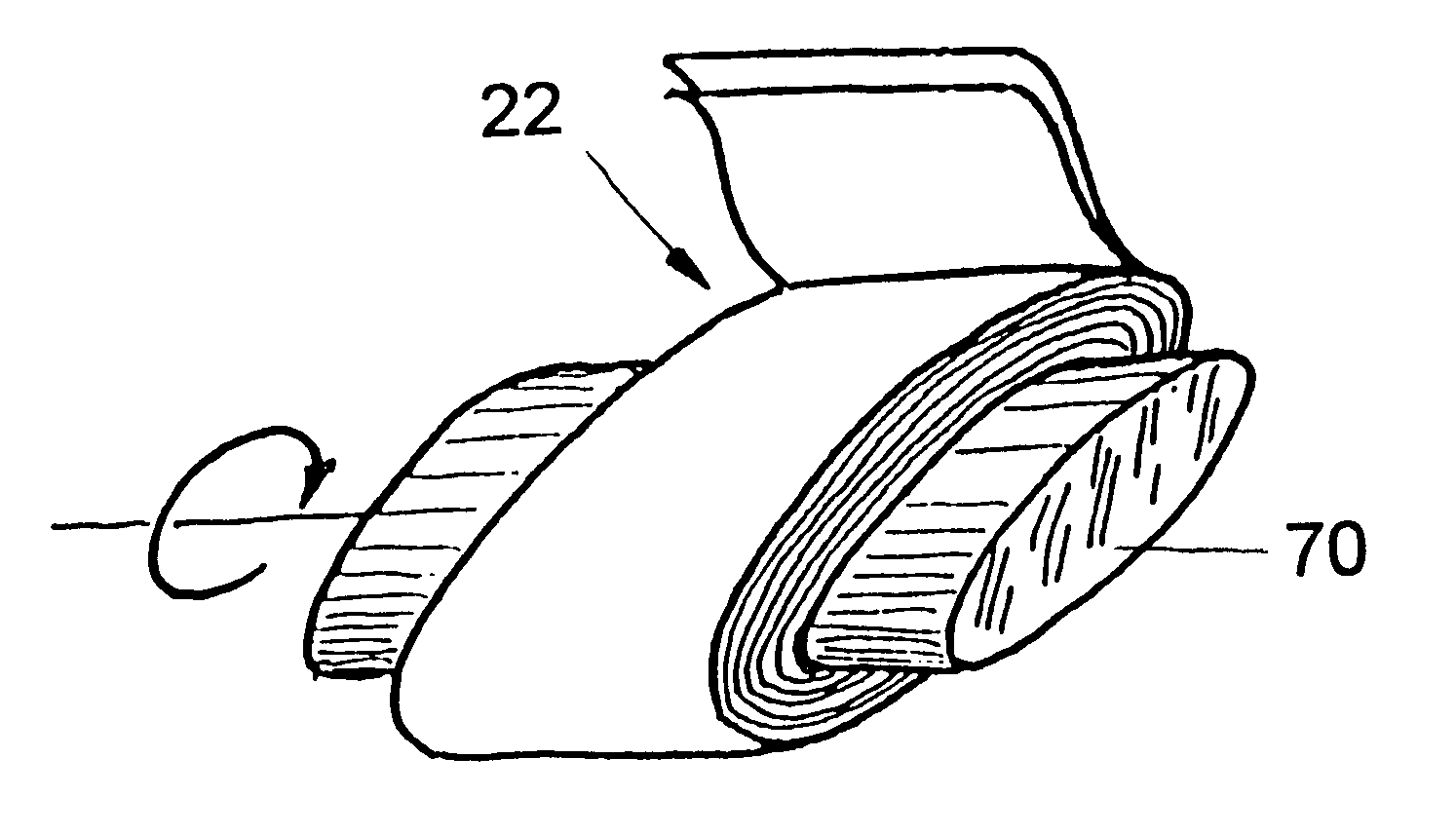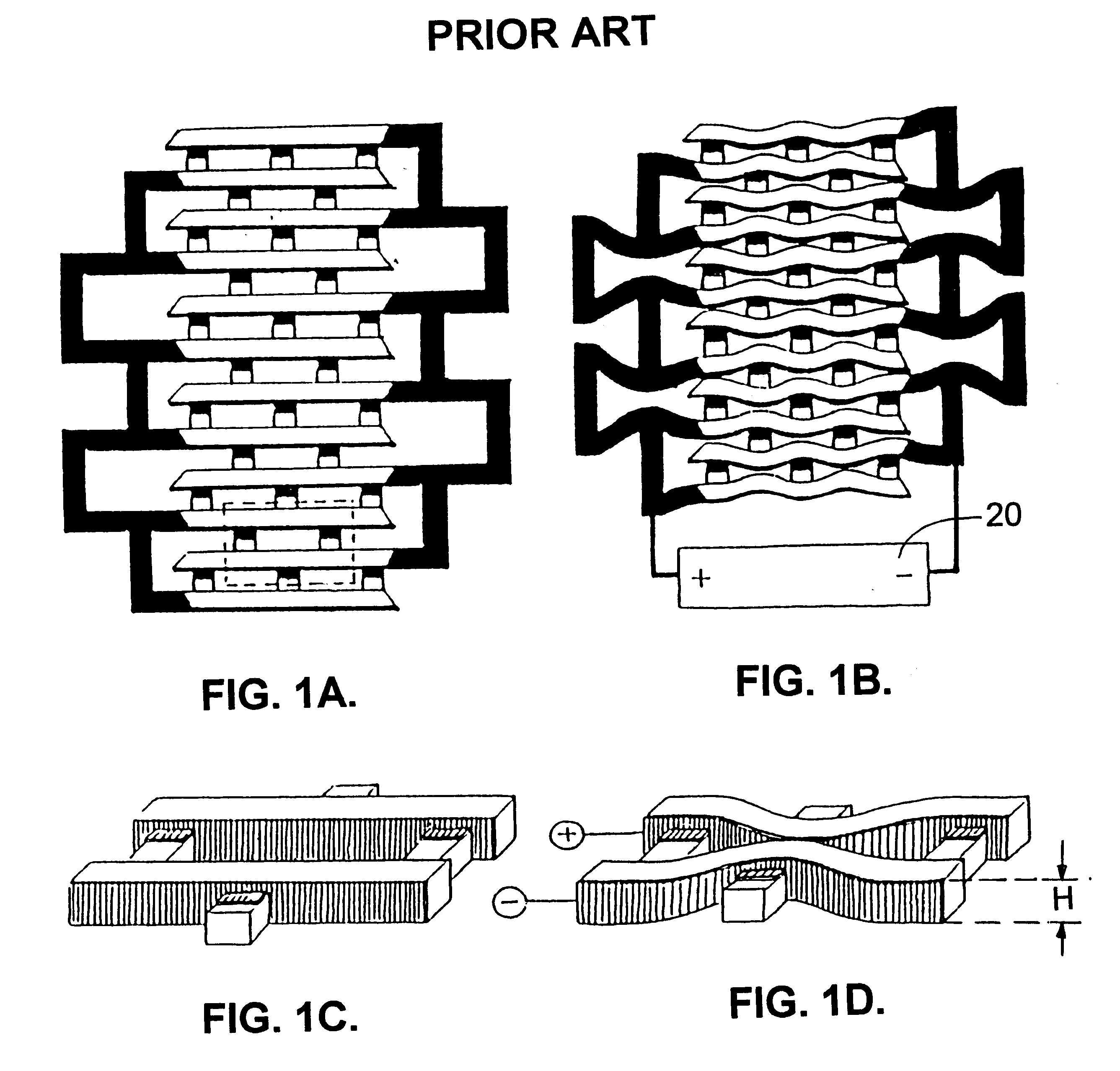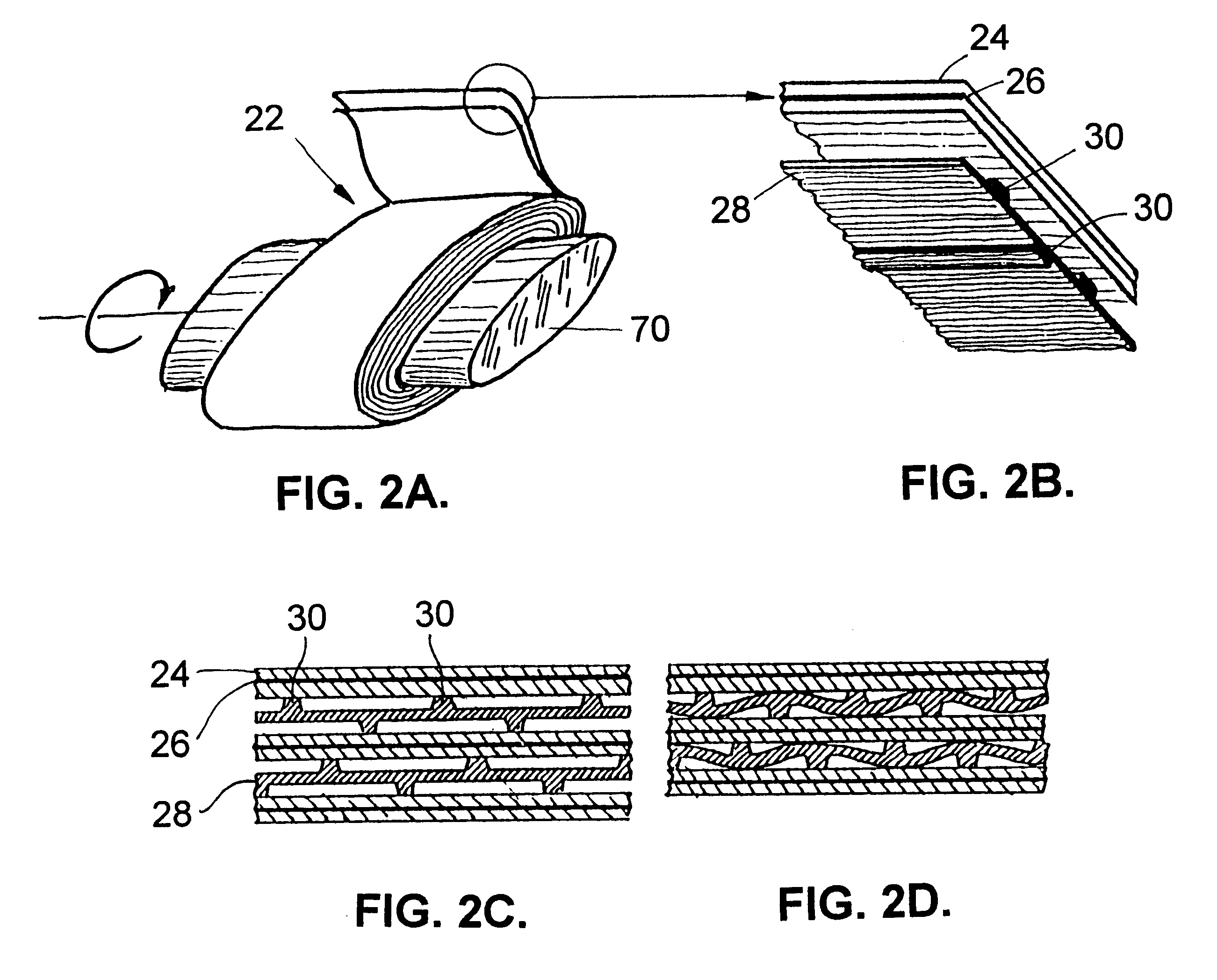Spiral wound transducer
a transducer and spiral wound technology, applied in the field of transducers, can solve the problems of capacitor plate height, and many types of previous transducers consume substantial amounts of electrical power
- Summary
- Abstract
- Description
- Claims
- Application Information
AI Technical Summary
Benefits of technology
Problems solved by technology
Method used
Image
Examples
Embodiment Construction
The present invention provides a spiral wound transducer (SWT) of the invention is an array of metallized plastic capacitive force cells prepared by assembly and treatment of flexible and stiff layers. The cells compress when the device is electrically powered to produce an overall deformation.
Referring to the figures, a first embodiment of the invention is shown in FIG. 2 (a-d). FIG. 2a is a perspective view of an SWT assembly 22, with a detail thereof being shown in FIG. 2b. FIG. 2c shows a cross-section of an unpowered, relaxed SWT and FIG. 2d shows a cross-section of a powered, compressed SWT. The transducer as shown comprises a double plastic layer in the form of two continuous shapes wound on a central form 70B1. This form may be either conductive or insulating. It typically remains in place and may be used to electrically and / or mechanically attach the transducer to an external system. One of the plastic layers 24 is stiff and contains a conductive embedded sheet 26. The stif...
PUM
 Login to View More
Login to View More Abstract
Description
Claims
Application Information
 Login to View More
Login to View More - R&D
- Intellectual Property
- Life Sciences
- Materials
- Tech Scout
- Unparalleled Data Quality
- Higher Quality Content
- 60% Fewer Hallucinations
Browse by: Latest US Patents, China's latest patents, Technical Efficacy Thesaurus, Application Domain, Technology Topic, Popular Technical Reports.
© 2025 PatSnap. All rights reserved.Legal|Privacy policy|Modern Slavery Act Transparency Statement|Sitemap|About US| Contact US: help@patsnap.com



